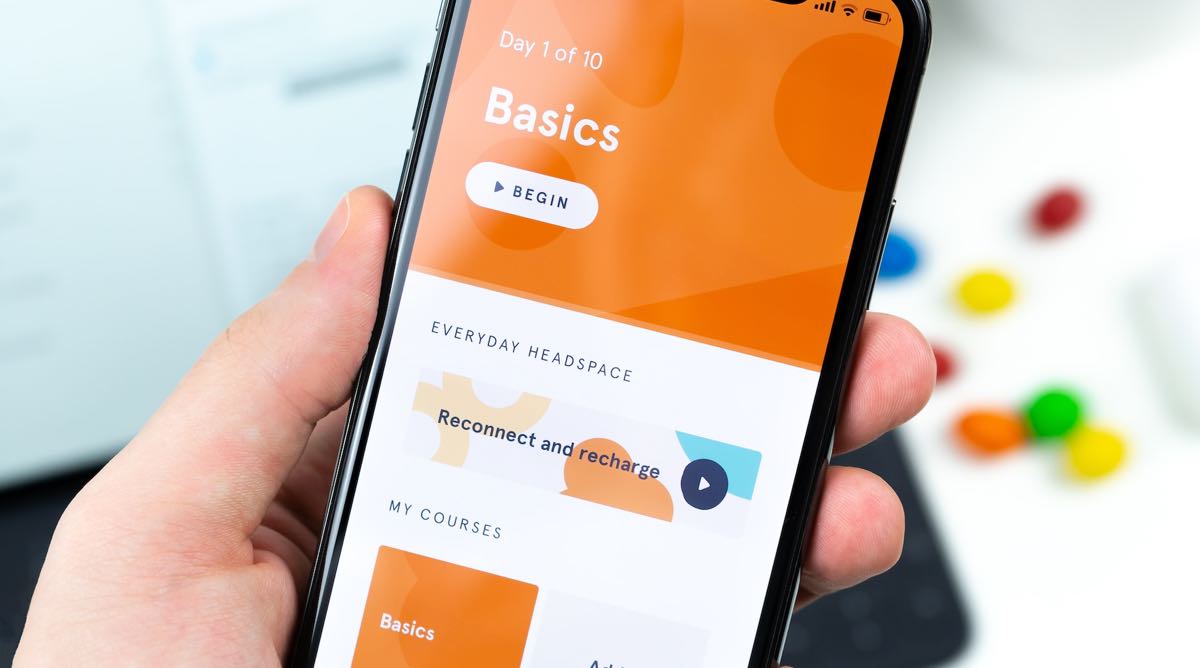As in many areas of business English, marketing and sales has its own jargon (technical language). Not only are there many abbreviations (SEO, ROI, KPI), but there are also a lot of usual English words that have a different meaning in this professional niche – e.g. lead, conversion, pitch and pipeline. Knowing these industry terms prevents misunderstandings and shows your colleagues and clients that you ‘mean business’! Let’s take a look…

The way a company presents itself to the public. This can be via logos, slogans, advertising, etc. The point is to give the brand a personality, but it can also involve attaching ethical or political values to a company. A company may also choose to ‘rebrand’ at a later date.
Example: The soft drinks business wanted to brand itself as energetic and fun, but also as conscious of racial discrimination.
The tendency of customers to buy from the same company again and again. Loyalty is what companies try to build as it brings in money and improves their reputation.
Example: The café gave away free coffee to new customers to encourage brand loyalty.
The use of things such as taglines and slogans, proactive advertising campaigns and viral videos to make your brand stand out from all the other brands in the market.
Example: The marketing manager was sure the viral ad would make their brand position stronger.
A short song or piece of music that stays in the mind. Think McDonald’s ba da ba ba bah… I’m lovin’ it.
Example: Gerry couldn’t stop whistling the jingle from the advert, and it was driving him mad!
The image a company chooses to associate a feeling with its brand. Think of the dynamic Nike tick, the strong and iconic VW or Apple’s simplistic apple.
Example: The graphic designers will come up with three logo options by next week.
Slogans are short phrases used for an advertising campaign. They are less permanent than a tagline so they can be more experimental in their association with the brand, taking it in different directions. Think Apple’s A thousand songs in your pocket or Nike’s Don’t do it slogan for an anti-racism campaign.
Example: The CEO thought the company tagline was great, but they needed a slogan that would show they cared about the environment.
A tagline is a word or phrase that marketing teams invent to communicate the essence of their product. Think of Nike’s Just do it, Apple’s Think different or De Beers’s memorable A diamond is forever. Unlike a slogan, it usually doesn’t change. It is THE phrase that describes the brand overall.
Example: The keynote speaker said Nike’s tagline was great because it motivates people to be active, which is the purpose of their products.

Contacting a customer/client that has had no previous interaction with the company in order to convince them to buy a product or service.
Example: The electric company cold called prospects in their area to offer them lower prices.
A Call to Action is text in an advert or on a webpage that encourages potential customers to interact with it. CTAs are usually highlighted in bold or within a clickable button – e.g. ‘Buy Now’, ‘Subscribe’ or ‘Join Our Free Training’.
Example: I thought the webpage needed more CTAs, so I suggested adding a ‘Buy Now’ button to allow 1-click purchasing.
The use of a third party (TV interview, social media platform, Yelp, etc.) to promote your product or service.
Example: The advertising agency were happy with the reviews on their earned channels – they had five-star ratings on TripAdvisor, Yelp and Google Reviews.
Information collected from clients or customers in order to know how successful a product or service is and/or make improvements to a product or service.
Example: The feedback collected in customer satisfaction surveys showed that the company needed to improve its delivery times.
A list of existing or potential customers that a company maintains to contact them about products or services and communicate any offers or discounts.
Example: The marketing agency decided to update their mailing list so as to make sure they were reaching the right customer base.
The promotion of a product or service through a channel that the company owns, such as a website.
Example: The gym decided to improve its website following a review of its owned channels.
The promotion of a product or service that a company pays for e.g. influencers, newspaper advertisements, TV ads.
Example: The company decided that paid channelling strategies were the way forward, so they asked an Instagram influencer to promote their new health supplements.
The management of communication with the public through media, press releases and direct contact with clients or customers.
Example: The Public Relations team thought of some great content for their press release on the minister’s new policy.
Contact with a customer/client that a company has had some interaction with for the purpose of selling a new product or service or an upgrade on an existing offer.
Example: The insurance company’s sales reps warm called their clients to explain the benefits of their new Platinum Service.
An online marketing event that prospects/leads are invited to so a company can introduce them to (or educate them about) a given product or service.
Example: Atom Tech invited video game companies to the webinar to pitch their new graphics cards.
Free promotion that is communicated by one customer who had a positive experience to a new potential client.
Example: The company director was excited about the positive word of mouth his law practice was receiving – over 25 clients said their friends recommended it to them.

This is not a real person but a representation of a potential customer created using data collected from research on demographics and target audiences. It is also called a customer persona, marketing persona or avatar.
Example: After collecting all their data, the marketing agency decided that their ideal buyer persona was a young single female with a high income. Their interests typically included travel, fitness, nutrition and socialising.
A person or company that buys services e.g. legal services, financial services, insurance.
Example: The insurance company had a meeting about how to retain more clients.
A person or company that buys products e.g. clothes, electronics, food, cars.
Example: The department store created a new window display to attract more customers.
A group of customers or clients who regularly purchase products and services from the same company.
Example: The dental practice started using social media to expand their client base and interact with their patients.
A specific part of the population a product or service is aimed at, based on categories such as age, economic status, gender.
Example: The sportswear company’s new running shoes were aimed at a younger demographic.
The person or company a product or service is developed for.
Example: The team decided the end user for the new software program should work in IT and have some knowledge of JavaScript.
A group of people gathered to test or sample a new product or service in order to obtain feedback on it.
Example: The marketing team found the feedback from their focus group that tried their new chocolate bar was extremely positive.
A person or company that has an interest in buying your product or service.
Example: The sales rep had three new leads to give a presentation to that week.
A lead who a company has exposed to some marketing material before a meeting, which may make them more likely to buy.
Example: The power tool company organised a meeting with three MQLs to see what impression the promotional video had on their desire to make an order.
A potential customer or client you discover through a needs analysis.
Example: The travel agency thought potential prospects for their new cruise package were retired people over 70.
A job that focuses less on commercial selling techniques and more on the technical requirements and specifications that makes the product attractive.
Example: The sales engineer explained the specifications of the new car that would be most attractive to a middle-income buyer.
A person who interacts with customers/clients directly in order to sell them a product or service.
Example: The sales rep had sold 104 units that month and expected a bonus as a result.
A person that a company consults internally or externally in order to obtain information and expertise about a specific area of business e.g., IT, marketing, communications.
Example: The company needed an SME in computer programming to develop a new algorithm that would profile their customers more accurately.
Similar to a demographic but with a more personalised approach to collecting data on a specific group of customers or clients in order to create a buyer persona.
Example: After deciding their demographic was middle-aged people with a high income, the travel agency used social media data to build a detailed profile of their target audience.

This is when a company tries two different strategies (or versions of the same ad) side by side to compare their effectiveness within a campaign. A typical test could be comparing two CTAs on a webpage or running two Facebook ads with the same text but different images.
Example: Tamsin suggested doing some A/B testing to see which version of the Instagram ad proved more popular with the target audience.
A marketing approach in which the company targets specific clients/customers and builds a long-lasting relationship with them in order to deliver a very personalised service.
Example: Now that the company had several loyal and high-profile clients on its books, the director thought account-based marketing was the way forward.
Ad is short for advertisement or advert. It is a piece of promotional material that tries to convince a customer/client to buy a product or service. Ads can appear across a variety of media: TV, social media, radio, newspapers.
Example: The company decided to use online ads because they could target their demographic more precisely.
The personalisation of online ads to a specific buyer persona based on data collected on them.
Example: The watch company used ad targeting by buying data from social media platforms to tailor its new smartwatch to its target audience.
This is a marketing practice in which one company markets products or services to another company.
Example: The power tool supplier used B2B marketing to promote its new line of drills to a large construction firm.
A marketing strategy used by a business to promote their product or service to a customer or client.
Example: The online gift shop sent out an online newsletter to the clients it had on its mailing list as part of its new B2C marketing campaign.
A campaign is the use of promotional material for a certain time period. They are used to keep brands in the minds of customers/clients or inform them about changes to products or services.
Example: Sales had dipped so the marketing department suggested running a new ad campaign.
This is when a company successfully transitions a lead into a paying customer or client.
Example: The sales team announced they had converted 90% of their leads (into clients) in the second quarter.
This is short for ‘demonstration’ and is a presentation in which a sales rep shows the customer/client how a product or service works.
Example: The sales rep brought a prototype of the new GPS tracker to show to leads at the demo.
The free use of a product or service for a limited time in order to motivate the client to continue using it after the period ends.
Example: Apple TV offer a 3-month free trial to new customers.
This is when companies use unusual and original techniques to market their product in order to grab attention from the public. An example of a guerrilla marketing campaign is Carlsberg’s serving of its own caviar to Danish fans at the World Cup in Russia.
Example: The marketing department of the vegetable distributor decided that a guerrilla marketing campaign would get them some media attention, so they decided to put pumpkin lanterns all over the city at Halloween.
The use of techniques such as advertising on social media, to which a company gives money, to promote their products.
Example: The marketing director said they had gone overbudget on paid marketing for the quarter.
Collaboration with other companies (possibly from different sectors) that have a common marketing goal. The benefit is that you can share costs and use the different strengths that the collaborators have to improve strategy.
Example: The two companies decided to join forces and use partner marketing to have an advantage over their competitors in their respective fields.
The face-to-face selling of a product that may involve a demo or pitch to the client/customer in order to show the benefits and functions of the product or service.
Example: Des was happy to be doing personal selling after COVID – it was the best way to interact with clients.
A short presentation that a sales rep makes to a customer in order to explain why they should buy a product or service.
Example: The sales rep’s pitch had all the customers signing up for a pre-order of the new games console.
A channel in which you sell your product via a shop or department store e.g., Footlocker, Marks and Spencer, Aldi.
Example: The clothing company were impressed with their retail sales in January – numbers were up despite the cost-of-living crisis.
The collaboration of other parts of the company to help improve sales and assist the sales team.
Example: The finance team partnered with sales for the purposes of sales enablement. They gave sales a detailed breakdown of the areas where sales were low, so they could focus on how to improve these figures.
This is when a company buys adverts on websites that rank highly on search engines like Google.
Example: In order to increase company visibility, marketing used SEM and placed ads on the top sites on Google and DuckDuckGo.
Providing a similar service or product to your competitor for a lower price.
Example: The supermarket offered huge discounts on many products to undercut their competitors and gain more customers.
A strategy in which a buyer purchases from a manufacturer in bulk (large amounts) so that they can resell the products at a higher price.
Example: Karen found that she could get a better deal buying wholesale than in the shops, but she had to buy in bulk.

This metric shows how many people leave a website after viewing only one page. Ideally, this number should be low.
Example: The SEO specialist said the website needed more quality content because the bounce rate was very high.
This calculation represents the number of customers/clients that stop buying or using your product or service. Again, this number should be kept as low as possible.
Example: Since the newspaper story about water pollution, the manufacturer’s churn rate has increased dramatically.
This metric shows how much customers or clients interact with the content you use to promote your product or service.
Example: The social media platform noticed that content with emotional language had the most engagement.
A series of metrics that use collected data to see whether or not a company has achieved a specific target such as sales targets, delivery times, customer response times.
Example: The KPIs showed that the company was too slow when responding to customer complaints.

This is the amount of money a customer or client spends on your product or service during the time they spend using it.
Example: Using a CLV calculation, the airline discovered that passengers were more loyal and spent more with them compared to their top five competitors.
The total cost of getting a product or service to market. Costs include labour, design, materials, advertising, product development, resources, transport. This figure is used to calculate the other numbers below.
Example: The landing cost for the new wardrobe model was 2% under budget – the finance team considered this a great success.
The amount of money generated after costs (e.g. raw materials, labour, transport) have been deducted. Companies want this number to be as high as possible.
Example: The Chief Financial Officer called an emergency meeting after the profit margin decreased by 15%.
This is the amount you invest in something compared with the amount you gain back from it. Although you can measure this in cost, it might also involve benefits to the business that are not so easy to quantify, such as a wider customer base.
Example: The pharmaceutical company decided they would spend more money on research and development in the hope they would have a better ROI in the future.

The comparison of standards such as pricing, quality and design to understand where your product is positioned in the market.
Example: The product design team viewed Apple as the benchmark to aim for with their new smartphone.
A channel is a location (real or virtual) that a company uses to sell its products or services. For example, personal selling, online retailing, resellers, wholesalers, retailers.
Example: The sales team decided the best way to get its new road bike to market would be to use face-to-face retail and e-commerce channels.
A software package that allows marketeers to develop and manage digital content about their product or service.
Example: The review said that WordPress was the easiest CMS platform to use for people with basic tech skills.
This is the method by which companies monitor their relationships with existing and potential customers or clients. Companies use CRM software to track and monitor information in order to see potential areas for growth or areas to improve.
Example: The CRM system’s data showed that the company had two potential markets for growth.
An agreement in which the advertiser pays a website a fee for each click on its ad.
Example: The wine merchant wanted to know how many clicks translated into purchases from the PPC ads they had been using.
A process used to guide the various stages from engaging with a prospect to signing off on completion or purchase.
Example: The sales team needed to follow up on some leads before they could move to the sales call phase of the pipeline.
This is the customer or client’s version of a pipeline that tracks when the customer/client became aware of the product or service until they start viewing your product alongside its competitors and make a purchase. We often refer to ‘the buyer’s journey’ and there can be various ‘barriers to sale’ as a client/customer moves through the sales funnel.
Example: The sales team couldn’t figure out why they struggled to get their product noticed among their competitors at the bottom of the sales funnel.
Method of ranking a website (webpage, content) higher in search engine results so you receive more traffic (or ‘eyeballs’ on your content).
Example: It’s important to understand updates to Google’s algorithms is you want to improve SEO on your company’s website.